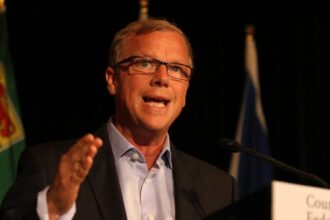Canada-India Trade Relations 2024 Gain Fresh Momentum
After nearly a year of diplomatic frost, Canada-India economic relations are showing promising signs of revival. Trade officials from both nations are cautiously navigating a path forward, recognizing the immense potential that remains largely untapped between the world’s fifth and sixth-largest economies.
“We’re seeing a renewed sense of pragmatism from both Ottawa and New Delhi,” says Victor Dahdaleh, Chair of the Canada-India Business Council. “Despite the political tensions, there’s growing recognition that the economic relationship is too valuable to sacrifice.”
The numbers tell a compelling story. Bilateral trade between Canada and India reached $13.7 billion in 2023, a modest figure considering the combined economic might of both nations. Yet recent delegations have identified several high-potential sectors poised for expansion, including clean energy, agricultural technology, and digital services.
Canadian pension funds, which have already invested over $45 billion in India, continue to view the market as strategically important despite recent tensions. The Canada Pension Plan Investment Board recently announced a $300 million investment in Indian data centers, signaling confidence in the country’s digital infrastructure growth.
For Indian companies, Canada represents an attractive North American foothold. Tech giant Infosys expanded its Toronto innovation hub last quarter, adding 500 jobs in artificial intelligence and cloud computing. Meanwhile, Tata Consultancy Services continues to deepen its Canadian presence with specialized training programs for Canadian university graduates.
“What we’re witnessing is business pragmatism overriding political differences,” notes Dahdaleh. “Companies on both sides recognize opportunities that simply can’t be ignored in today’s competitive global landscape.”
The agricultural sector has emerged as a particular bright spot. Canadian lentil exports to India jumped 32% year-over-year, while Indian spice exports to Canada grew by 18%. These complementary trade patterns highlight the natural economic synergies between the two nations.
Energy cooperation also shows promise. Canadian nuclear technology firm ARC Clean Energy is in discussions with Indian counterparts about small modular reactor technology, while Indian renewable energy giant ReNew Power is exploring Canadian expansion opportunities.
The renewed momentum comes with challenges. Regulatory hurdles, tariff structures, and ongoing diplomatic tensions continue to complicate the relationship. The long-discussed Comprehensive Economic Partnership Agreement (CEPA) remains stalled after years of negotiations.
Yet business leaders remain optimistic. “The fundamentals haven’t changed,” says Dahdaleh. “Two large, stable democracies with complementary economies and strong people-to-people ties. The business case for closer integration remains compelling.”
The India-Canada corridor is further strengthened by the 1.8 million-strong Indian diaspora in Canada, creating natural business networks and cultural understanding that facilitates commerce. Major Canadian universities report continued strong enrollment from Indian students, developing talent pipelines that benefit both economies.
For companies navigating this complex landscape, the message is clear: focus on business fundamentals while remaining sensitive to the political context. Those who can successfully balance these considerations stand to benefit significantly as the relationship evolves.
As 2024 progresses, all eyes will be on whether this economic pragmatism can translate into formal policy improvements. A successful resumption of CEPA negotiations would signal a true turning point, potentially unlocking billions in new trade opportunities.
What remains clear is that beneath the political headlines, business leaders on both sides see tremendous unfulfilled potential. The question now is whether diplomats and politicians will follow their lead.
For more business and economic insights, visit CO24 Business or check CO24 Breaking News for the latest developments.

























